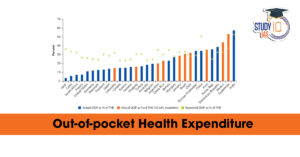Table of Contents
- Energy is the basic requirement for economic development. Every sector of the national economy (agriculture, industry, transport, commercial, and domestic) needs inputs of energy.
- The economic development plans implemented since Independence necessarily required increasing amounts of energy to remain operational. The energy resources can be divided into two types:
- Renewable energy resources: It includes Biomass, Wind, Hydro-power, Geothermal, and Solar sources. It can be used again and again.
- Non- renewable energy resources: It is that energy that is extracted from fossil fuels (coal, crude oil, natural gas) and uranium.
Thermal Power in Punjab
- The total power generation capacity of the state is 14724 MW (as of September 2023), including 1760 MW from state thermal plants, 3920 MW from IPP (Independent Power Plant), 1015 MW from Hydro Power, 295 MW from solar roof-top plants, etc.
Thermal Projects in the Government Sector
- Guru Nanak Dev Thermal Plant, Bathinda (closed permanently on 01.01.2018)
- Guru Gobind Singh Super Thermal Plant, Ropar
- Guru Hargobind Thermal Plant, Lehra Mohabbat
Thermal Projects in the Private Sector
- Rajpura Thermal Power Plant, Rajpura
- Talwandi Sabo Power Project, District Mansa
- Goindwal Sahib Thermal Plant, District Tarn Taran
Hydel Power in Punjab
- The power produced with moving water is known as Hydel Power or Hydroelectric Power.
These power plants are usually located on or near a water source. The volume of the water flow and the change in elevation from one point to another determine the amount of available energy in moving water.
Existing Hydel Projects in Punjab
- Upper Bari Doab Canal (UBDC) Hydro Electric Power House, Pathankot
- Mukerian Hydel Project, Talwara
- Anandpur Sahib Hydel Project, Anandpur Sahib
- Ranjit Sagar Dam, Shahpur Kandi
- Shanan Power House, Joginder Nagar
Proposed Hydel Projects
- Shahpur Kandi (206 MW) [on the Ravi river at Pathankot]
Power demand in Punjab
- Punjab provides free electricity to its farmers. In 2021-22, electricity consumed by the agricultural sector in Punjab has decreased by 3.97% over the previous year. This was 24% of total electricity sold in the state, higher than the corresponding 20% registered at the all India level. However, this has seen a declining trend in Punjab.
- Punjab has been able to meet the increasing demand for power. The estimated demand for electricity has consistently grown in the State. As of 2022-23, demand for electricity was 69,520 Million Units (MU) against 62,850 MU in 2020-21. In spite of fluctuations in electricity generation, the availability of electricity has been more or less at par with the demand for electricity.
Some Government Initiatives
- PSPCL has successfully overcome the challenges of Pachwara Central Coal Mine, which was closed for the last 7 years and started supplying coal to PSPCL Thermal Power Stations in December 2022.So far more than 26 lakh metric tons of coal has been supplied to PSPCL thermal power stations.
- One time Earlier Settlement (OTS) scheme has been introduced for defaulting consumers to settle their dues. This scheme was earlier applicable for 6 months till 24.11.2023, which has now been extended up to 26.12.2003.
- 600 units (300 units per month) electricity has been provided free of charge to all domestic consumers for electricity consumption.About 90% of domestic consumers have received zero bills. Along with this,a subsidy of Rs. 3 per unit has been continued for domestic consumers up to 7 kW.
- No fixed charges are leviable from Small Power Industrial consumers till the Industrial and Business Development Policy 2022 is applicable.
- To mitigate the impact of climate change, we need to reduce our reliance on fossil fuels and invest in alternative sources of energy that are clean, accessible, affordable, sustainable and reliable. In view of the same Punjab Government has executed following PPAs for Solar energy recently with different developers.
- A 800 MW solar/hybrid power project was fully commissioned by December, 2022 and power has started flowing in the PSPCL system.
- Further additional solar power of 400 MW is scheduled to be commissioned by March, 2024.


 Punjab PCS Admit Card 2025 Released: Dow...
Punjab PCS Admit Card 2025 Released: Dow...
 Out-of-Pocket Health Expenditure, Reason...
Out-of-Pocket Health Expenditure, Reason...
 Treasury Bills (T-bills): RBI Cuts Holdi...
Treasury Bills (T-bills): RBI Cuts Holdi...


















